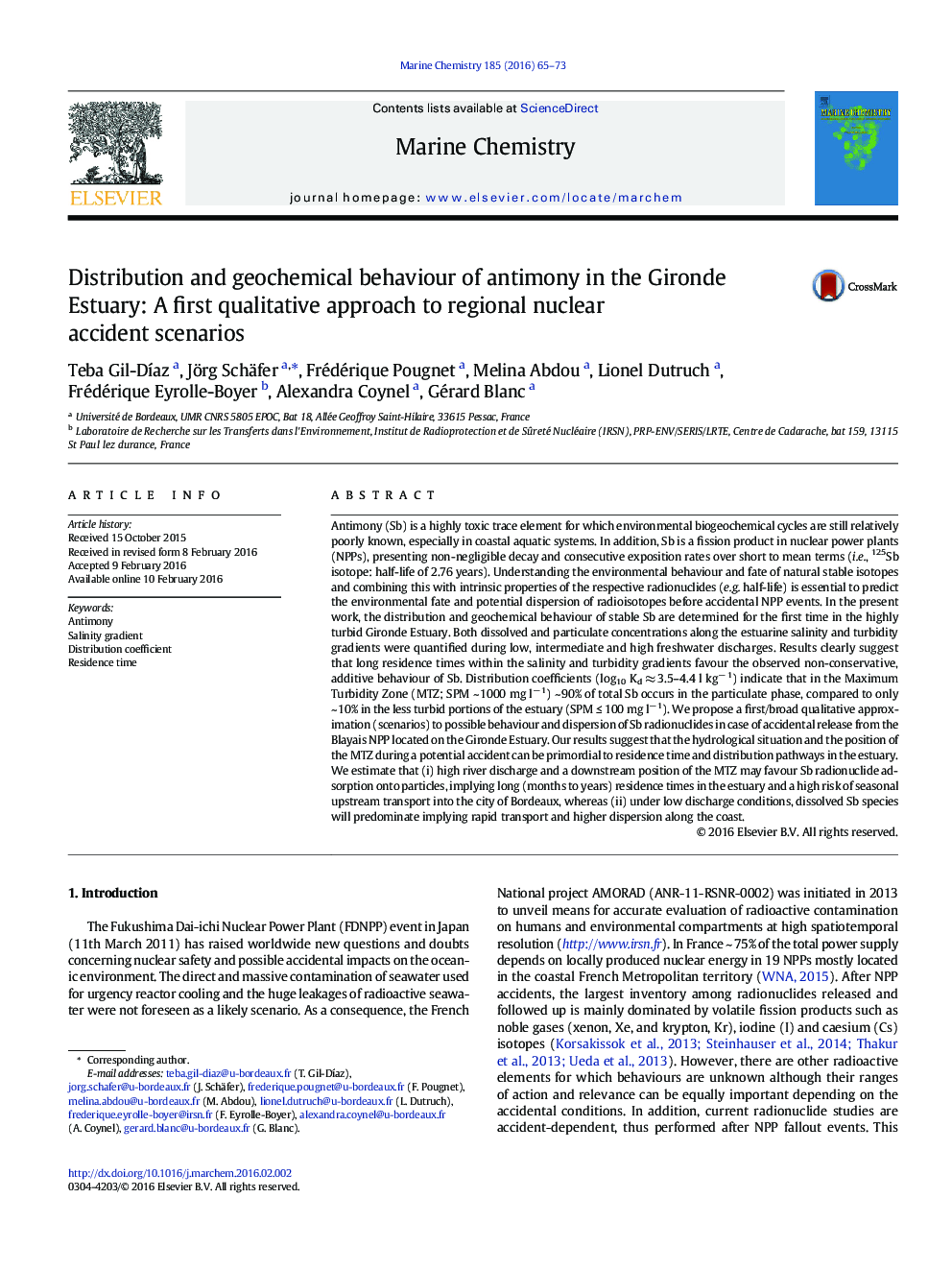| کد مقاله | کد نشریه | سال انتشار | مقاله انگلیسی | نسخه تمام متن |
|---|---|---|---|---|
| 1263146 | 1496651 | 2016 | 9 صفحه PDF | دانلود رایگان |
• Antimony addition occurs in the high salinity range of the Gironde Estuary.
• Long estuarine residence times may favour Sb non-conservative behaviour.
• Salinity and turbidity gradients determine antimony solid/liquid partitioning.
• The first qualitative scenario of Sb radionuclide dispersion in the Gironde Estuary
• Discharge and MTZ position control accidental Sb radionuclide dispersion.
Antimony (Sb) is a highly toxic trace element for which environmental biogeochemical cycles are still relatively poorly known, especially in coastal aquatic systems. In addition, Sb is a fission product in nuclear power plants (NPPs), presenting non-negligible decay and consecutive exposition rates over short to mean terms (i.e., 125Sb isotope: half-life of 2.76 years). Understanding the environmental behaviour and fate of natural stable isotopes and combining this with intrinsic properties of the respective radionuclides (e.g. half-life) is essential to predict the environmental fate and potential dispersion of radioisotopes before accidental NPP events. In the present work, the distribution and geochemical behaviour of stable Sb are determined for the first time in the highly turbid Gironde Estuary. Both dissolved and particulate concentrations along the estuarine salinity and turbidity gradients were quantified during low, intermediate and high freshwater discharges. Results clearly suggest that long residence times within the salinity and turbidity gradients favour the observed non-conservative, additive behaviour of Sb. Distribution coefficients (log10 Kd ≈ 3.5–4.4 l kg− 1) indicate that in the Maximum Turbidity Zone (MTZ; SPM ~ 1000 mg l− 1) ~ 90% of total Sb occurs in the particulate phase, compared to only ~ 10% in the less turbid portions of the estuary (SPM ≤ 100 mg l− 1). We propose a first/broad qualitative approximation (scenarios) to possible behaviour and dispersion of Sb radionuclides in case of accidental release from the Blayais NPP located on the Gironde Estuary. Our results suggest that the hydrological situation and the position of the MTZ during a potential accident can be primordial to residence time and distribution pathways in the estuary. We estimate that (i) high river discharge and a downstream position of the MTZ may favour Sb radionuclide adsorption onto particles, implying long (months to years) residence times in the estuary and a high risk of seasonal upstream transport into the city of Bordeaux, whereas (ii) under low discharge conditions, dissolved Sb species will predominate implying rapid transport and higher dispersion along the coast.
Journal: Marine Chemistry - Volume 185, 20 October 2016, Pages 65–73
